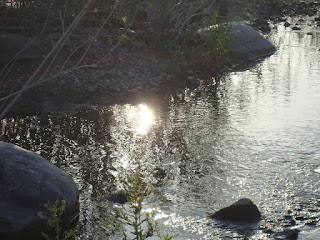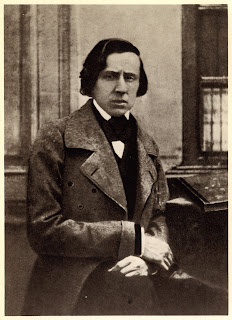 On March 26, 2012, I started a new adventure - teaching a class on art and ethics to inmates of Pitchess Detention Center in Castaic, CA. I designed my four-part class as lessons in connecting feelings to thoughts, to teach virtues by using artwork, music, and poetry - a full range of artistic experiences. I called it EVA, or Ethics and Values in Art.
On March 26, 2012, I started a new adventure - teaching a class on art and ethics to inmates of Pitchess Detention Center in Castaic, CA. I designed my four-part class as lessons in connecting feelings to thoughts, to teach virtues by using artwork, music, and poetry - a full range of artistic experiences. I called it EVA, or Ethics and Values in Art.The core framework is provided by the Four Cardinal Virtues - courage, justice, wisdom or prudence and moderation, or temperance. Known since antiquity and used to teach moral values and character through over two thousand years of Western history, the virtues have largely been forgotten. Their presence in the lives of artists and their artwork is very strong, from Rembrandt to Chopin... In planning the classes I associated each virtue with an emotion - grief, shame, joy and calm - and with a moral action - compassion, forgiveness, generosity and gratitude...
While designing the curriculum, I thought I would be teaching women, so I was quite surprised when I was assigned to a men's institution. At Pitchess, they have been given a chance to think through their decisions and change their lives. The group I'm working with has decided to do exactly that. They enrolled in and graduated from the MERIT-WISE program, a part of the Sheriff's Education-Based Incarceration project. In some ways, these men have the best chance for a successful life after completing their "time out" to rethink their life choices and orientation.
In order to get ready for the challenges ahead, they participate in various workshops and classes taught by volunteers like me. The majority have never been to an art museum or a classical music concert. My goal is to help them find their way to the Hollywood Bowl . . . That and not to return to jail. How does one do that?
The Cornerstone
Justice:
Do what's right, what's fair.
Fortitude:
Keep smiling. Grin and bear.
Temperance:
Don't take more than your share.
Prudence:
Choose wisely. Think and care.
Find yourself deep in your heart
In the circle of cardinal virtues
The points of your compass
Your cornerstone.
Once you've mastered the steps,
New ones appear:
Faith: You are not alone . . .
Hope: And all shall be well . . .
Love: The very air we breathe
Where we are.
 The framework I designed and teach right now is non-religious and, therefore, I skip the three Theological Virtues mentioned at the end of my poem. There is enough material for discussion, though, in the paintings of the Prodigal Son and Tobias by Rembrandt, Guernica by Picasso, City Whispers by Susan Dobay... There is enough inspiration in the Revolutionary Etude by Chopin and the Ode to Joy by Beethoven. If I put my own poetry in this context, am I acting grandiose and, as someone once called me (to my immense delight) - a megalomaniac? The point is to find yourself in your own words. I may "know" what's out there or what I've been taught, but I truly know only what I have experienced myself. I have to go deep inside, to the truth about me, to express a vision of the world that is both deeply personal and unique in my poetry.
The framework I designed and teach right now is non-religious and, therefore, I skip the three Theological Virtues mentioned at the end of my poem. There is enough material for discussion, though, in the paintings of the Prodigal Son and Tobias by Rembrandt, Guernica by Picasso, City Whispers by Susan Dobay... There is enough inspiration in the Revolutionary Etude by Chopin and the Ode to Joy by Beethoven. If I put my own poetry in this context, am I acting grandiose and, as someone once called me (to my immense delight) - a megalomaniac? The point is to find yourself in your own words. I may "know" what's out there or what I've been taught, but I truly know only what I have experienced myself. I have to go deep inside, to the truth about me, to express a vision of the world that is both deeply personal and unique in my poetry.Non Omnis Moriar
Only the best will remain.
Startled by beauty
I fly into the eye of goodness.
Only the best . . .
Wasted hours, words, signs,
Sounds and fake symbols.
Only:
Blue torrents of feeling
Crystallized in empty space
Twisted above our heads
Where light freezes
Into sculpted infinity
Oh,
If I could be there
Once
____________________________________
If only... To open their eyes and ears to new worlds, I take my students in blue prison garb on a wild tour of the most astounding creations of the human mind. The very first piece of music they hear is the "Revolutionary Etude" - Op. 10 No. 12, a lightning strike of a piece, designed to shake up and awaken... There applause at the end is intense. The majority has never heard anything like it.
 One man said, "thank you so much! This is my most favorite piece in all music, in all the world." He had asked for Chopin in the previous class and was beyond himself with delight when his unspoken wish was answered. I asked him to explain the piece to the class and put it in context. He knew enough to talk about Chopin's rage at the war, Poland being attacked by Russia, the composer's loneliness in Paris. He also thought about expressing anger and other powerful emotions in art as a positive way of responding to something that is overwhelming and destructive. From the feeling of despair at the unfairness of the world and Poland's tragic defeat to an unprecedented masterpiece.
One man said, "thank you so much! This is my most favorite piece in all music, in all the world." He had asked for Chopin in the previous class and was beyond himself with delight when his unspoken wish was answered. I asked him to explain the piece to the class and put it in context. He knew enough to talk about Chopin's rage at the war, Poland being attacked by Russia, the composer's loneliness in Paris. He also thought about expressing anger and other powerful emotions in art as a positive way of responding to something that is overwhelming and destructive. From the feeling of despair at the unfairness of the world and Poland's tragic defeat to an unprecedented masterpiece. I did not ask, why, if he was so educated and knew so much, was he there, sentenced to jail... Everyone makes mistakes. Some more serious than others. My presence among the inmates is to help them use their time as a turning point, find a new path for the future. I use classical and romantic masterpieces to show criminals that they can and should remake themselves and live a different life. How different? Are they going to learn to play the piano and become Chopin experts? Not really, but they can learn from his courage, his fortitude. He composed while spitting blood, sick with TB since the age of 16. Suffering all his mature life, he died prematurely, but left for us timeless treasures.
Etudes are, in essence, practice exercises; they are designed to learn certain skills, solve particular technical problems - arpeggios, chordal patterns, layering of melodies, the use of specific fingers. Practice makes perfect. After 10,000 hours of practicing a skill, we may become experts in it, as Malcolm Gladwell assures us. That is another lesson for offenders serving their sentences. Moral character takes time and effort to develop. Even the least educated inmates in the Los Angeles County jail may be inspired by the perfection of Chopin's art, transforming a humble exercise into a perfectly structured and intensely emotional artwork that has and will survive the ravages of time.
Versions (Pollini's is my favorite):
Svatoslav Richter: extremely fast and apparently transposed a halftone higher, the image does not go with the sound
Stanislaw Bunin: not technically perfect, but immensely popular, 2:33
Janusz Olejniczak: The phrase endings are somewhat rushed, but the drama is immense! 2:33
Maurizio Pollini: as dramatic and tender as it has to be, with great climaxes, and a score to follow, 2:49
_________________________________
Photos from Big Tujunga Wash (c) 2012 by Maja Trochimczyk
Chopin's last known photograph - daguerreotype by Louis-Auguste Bisson, 1849.
1 comment:
Thank you, Maja, for having guided me to that wonderful performance by Pollini. Yes, only the best shall remain, and I hope that Pollini's playing the Revolutionary will be among those immortal things.
I've taught poetry in prisons, and it's been one of the most touching experiences in my life. Bringing art in any form to the inmates animates art as nothing else I've seen.
Post a Comment